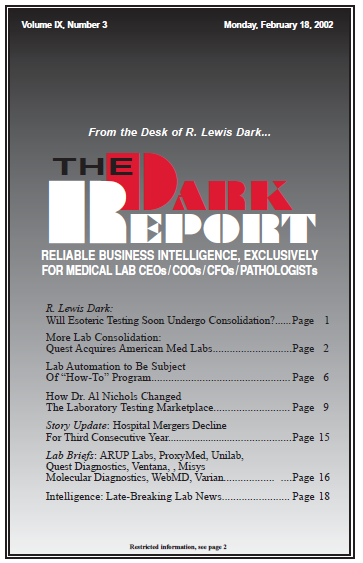CEO SUMMARY: At a time when lab testing meant routine assays performed within a few miles of the collection, Albert L. Nichols, M.D. envisioned a centralized national laboratory devoted to performing specialized, highly-complex testing to clinicians everywhere. Not only did his vision become the reality of the lab we know today as Nichols Institute, but …
How Dr. Al Nichols Changed The Lab Testing Marketplace Read More »
To access this post, you must purchase The Dark Report.


